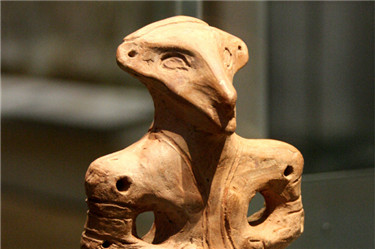
Photo credit: Michel wal
图片引自: Michel wal
8、Vinca Civilization
温卡文明(长春花文明)
Europe’s biggest prehistoric civilization, the Vinca, existed for nearly 1,500 years. Beginning in the 55th century B.C., they occupied land throughoutSerbia and Romania. Named after a present-day village near the Danube River, where the first discoveries were made in the 20th century, the Vinca were a metal-working people, perhaps even the world’s first civilization to use copper (they also excavated the first mine in Europe).
欧洲最大的史前文明,温卡,存续近1500年之久。从公元前55世纪开始,他们占据了遍及叙利亚和罗马尼亚的土地。首次发现于20世纪,并以发现地,多瑙河附近一当代小镇的名字命名。温卡人是一个从事金属加工的民族,他们或许是世界上最早使用铜的文明(他们同样采掘出了欧洲的第一桶矿产)。
Though the Vinca people had no officially recognized form of writing, examples of proto-writing, symbols which don’t actually express language, have been found on various stone tablets which date as far back as 4000 B.C. In addition, they were artistic and fond of children; archaeologists have found various toys, such as animals and rattles, buried among the other artifacts. They were also extremely organized—the houses of the Vinca civilization had specific locations for trash, and the dead were all buried in a central location.
虽然温卡人的存在无法从文字、类文字图样、甚至那些算不上语言的符号中得到正式承认,但的确发现有许多的石碑可以作证其存在,这些石碑可追溯至公元前4000年。另外,他们充满艺术气息并且喜欢孩子,考古学家发现了许许多多的玩偶,如动物和摇铃,这些玩偶与其他手工制品埋在一起。他们还非常的有组织性——温卡文明的房屋都有特定的垃圾丢弃点,并且死去的人全都被埋在一个中心地点。












